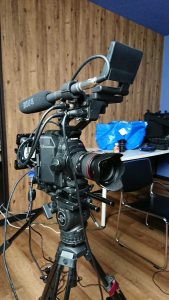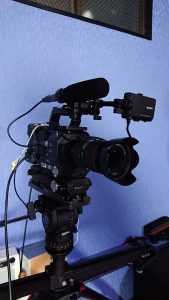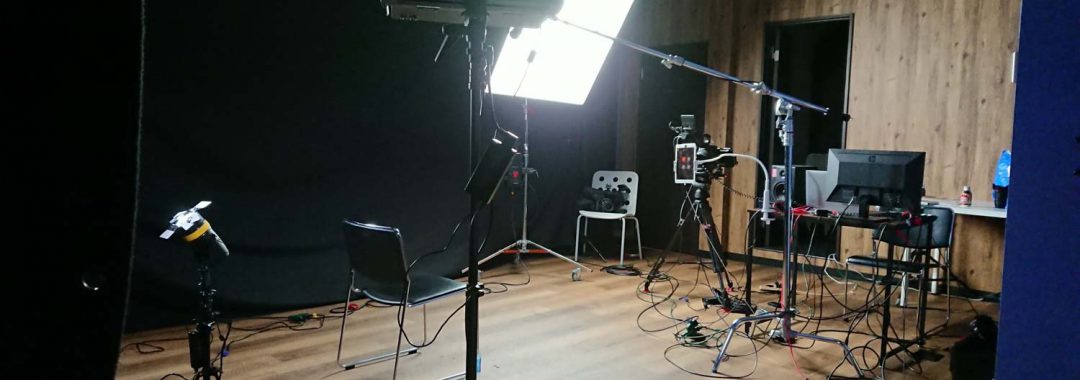Timecode Sync and Super 35 Digital Cinema Cameras: Canon C300 Mark II, C200, and Sony FS7 Mark II | April 2021
 There are many large-sensor cameras, also called digital cinema cameras, in the market today. What not a few people missed is these cinema cameras often do not have timecode I/o or genlockable interfaces. To my surprise, for example, Sony FS series do not have timecode I/o and gunlockable features as their default (I.e Sony’s FS7 mark II has to add XDCA-FS7 for timecode I/o).
There are many large-sensor cameras, also called digital cinema cameras, in the market today. What not a few people missed is these cinema cameras often do not have timecode I/o or genlockable interfaces. To my surprise, for example, Sony FS series do not have timecode I/o and gunlockable features as their default (I.e Sony’s FS7 mark II has to add XDCA-FS7 for timecode I/o).
We recently had requests to film interviews with multiple cameras (and also live streaming). A client said his editor is very keen to timecode and we needed to sync the cameras timecode exactly. The interviews last more than two hours. And problem we faced was; one of my colleague’s camera does not have timecode I/o; Canon’s C200.
I’m a Canon user and have a C300 mark II. This camera does have the features. I have taken it for granted. Its higher class brothers like C500 series and C700 also have them. On the other hand, C200 does not have timecode I/o. I had noticed it before shooting and needed to find some solutions for the shoot.
To make long story short, we ended up with renting a new C300 Mark II for that shoot. This is an important lesson for us who uses cinema cameras. These camera makers do not regard timecode as a necessary feature for cinema cameras. As long as your camera has these interfaces, it is quite easy to jam-sync two cameras from timecode generator like our Zoom f8n’s timecode out. We also rented Sony’t FS7 Mark II for another shoot with XDCA-FS7. I’m sure in our market Sony’s FS7 series and Canon’s C300 series are recognized as equivalent cameras. However, it is not true for me. You need additional equipment to make FS7 accept timecode. If you add XDCA-FS7, you also need to find different power solutions.
The client was happy with the final product. Everything looks fine, but I want to find better solutions. I do not want to rent another C300 Mark II every time we need timecode i/o.
 A possible solution : Using Shogun Inferno connected to Canon C200, amid recording UHD into the recorder via HDMI, and outputting HD signal for live-streaming from SDI into Atem Mini Pro, via SDI-to-HDMI converter. Finally, Shogun Inferno keeps accepting a signal from a timecode generator.
A possible solution : Using Shogun Inferno connected to Canon C200, amid recording UHD into the recorder via HDMI, and outputting HD signal for live-streaming from SDI into Atem Mini Pro, via SDI-to-HDMI converter. Finally, Shogun Inferno keeps accepting a signal from a timecode generator.
I see there are some solutions for timecode like using audio signal. For this occasion I did not think this option was feasible because the client did not say they could treat this way of timecode without problem. Obviously, you need some extra work and software to transcode it. I needed embedded timecode which can be seen without problem immediately after transferring files to their editing system.
After my study this time, I found Canon’s C300 Mark II is the best camera among them when it comes to timecode sync in multiple-camera setup, live-streaming, and 4K recording-out all at once. It’s possible to use C200 as the second camera with Shogun and timecode generator.

